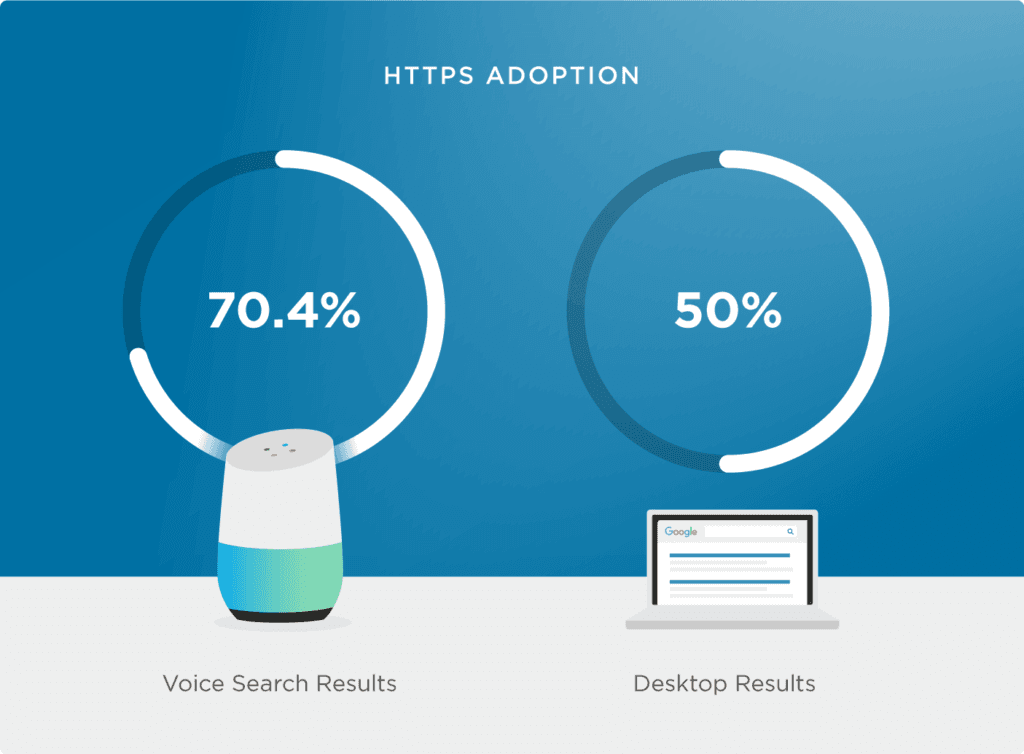Voice Search Optimization: SEO to Get Voice Search Traffic Now
Table of Contents
Voice Search Optimization (Voice SEO): The Complete Guide to Optimizing Your Website for Voice Queries
In the rapidly evolving digital world, voice search optimization has become a crucial aspect of search engine optimization (SEO). As more users rely on voice assistants like Siri, Google Assistant, and Alexa to perform searches, businesses must adapt their strategies to capture this growing audience. Optimizing your website for voice search queries can significantly improve your search engine results, driving more traffic to your website. This comprehensive guide will explore the intricacies of voice search optimization, offering insights and strategies to help you rank better in voice search results.

Search Engine Optimization (SEO) Marketing
Client:
ANJ Plumbing - Anjservices.com
Category:
Digital Marketing
Start Date:
10 March, 2021
End Date:
Still Growing
Keywords Growth
+475% Top 10 Keyword Rankings
Leads growth
+266% Monthly Lead Growth
Conversion
+346% Conversion increase
Live Chat
+120% Live Chat Request increase
1. Introduction to Voice Search
As digital technology continues to evolve, voice search has emerged as a revolutionary method for conducting online search queries. This innovation allows users to express their requests rather than typing, making the process more intuitive and efficient. With the increasing popularity of smart devices, businesses are recognizing the importance of optimizing their content for this trend.
Services like the Pronto Live Marketing Voice Search Optimization Service are designed to enhance visibility in voice search results. By focusing on natural language processing and user intent, these services help brands reach their audience effectively, ensuring their offerings are easily discoverable in a voice-driven digital landscape.
What is voice search SEO?
Voice search SEO refers to the process of optimizing your website to appear in voice search results. Unlike traditional text-based searches, voice searches are typically more conversational and often involve long-tail keywords. As users ask questions using natural language, voice search SEO focuses on understanding these queries and providing relevant, concise answers. This involves optimizing content for search engines like Google to ensure your website is easily accessible and ranks well for voice search queries. By implementing a voice search optimization strategy, businesses can enhance their visibility and engage more effectively with voice searchers.
The current state of voice search technology
Voice search technology has advanced significantly, with digital voice assistants becoming an integral part of daily life. Devices equipped with voice search capabilities, such as smartphones, smart speakers, and even cars, are now commonplace. These technologies rely on sophisticated algorithms to interpret and respond to voice search queries, making it essential for businesses to optimize their websites accordingly. As voice search works by understanding and processing natural language, it is crucial to ensure your website is mobile-friendly and optimized for quick responses. The current state of voice search technology underscores the importance of staying updated with the latest trends and features to maintain a competitive edge.
Voice search usage statistics and growth trends
The usage of voice search has seen exponential growth, with more users opting to use voice search to find information quickly and efficiently. Statistics reveal that a significant percentage of internet users now rely on voice search devices for their daily inquiries. This trend is expected to continue, driven by the increasing accuracy and convenience of voice search programs. As voice search becomes more prevalent, businesses must recognize the potential impact on their SEO strategies. By understanding the growth trends and adapting to the changing landscape, companies can leverage voice search to enhance their digital presence and attract more traffic to their websites.
The future of voice search SEO
The future of voice search SEO is poised for significant evolution as more users rely on digital assistants for information. This shift will demand that businesses optimize their content for conversational queries and long-tail keywords.
As services become increasingly voice-activated, understanding user intent will be crucial for effective optimization strategies.
Marketers must prioritize mobile-friendly designs and fast-loading pages to enhance the user experience in this emerging landscape.
Ultimately, adapting to the rise of voice search will ensure businesses maintain visibility and relevance in an ever-changing digital ecosystem.
Why businesses need to optimize for voice search
Optimizing for voice search is no longer optional; it is a necessity for businesses aiming to stay competitive in the digital age. As more consumers use voice search to find products and services, businesses that fail to optimize their websites risk losing potential customers. Voice search optimization involves tailoring content to match the conversational nature of voice queries, ensuring that your business appears in relevant voice search results. By implementing an effective voice search optimization strategy, businesses can improve their search engine rankings, increase visibility, and ultimately drive more traffic to their websites.
Major voice assistants: Siri, Google Assistant, Alexa, and Cortana
Major voice assistants like Siri, Google Assistant, Alexa, and Cortana play a pivotal role in the voice search landscape. These digital voice assistants are integrated into various devices, enabling users to perform searches hands-free. Each voice assistant has its unique algorithms and preferences, making it essential for businesses to optimize their content accordingly. Understanding how these voice assistants interpret and rank search queries can help businesses tailor their SEO strategies to improve visibility and engagement. By optimizing for these major voice assistants, businesses can enhance their chances of appearing in voice search results, reaching a broader audience and boosting their online presence.

2. Understanding Voice Search Behavior
Understanding voice search behavior is essential for businesses aiming to enhance their online presence. As search dynamics evolve, incorporating voice search keywords into content strategies becomes increasingly important. This shift necessitates a comprehensive approach to optimizing voice search on a site for voice search SEO, ensuring that the website works effectively with voice-activated services.
Furthermore, recognizing the importance of voice search can significantly impact how websites rank better in search results. By implementing voice search tips and integrating voice search functionalities, businesses can adapt to the changing landscape of search. This proactive approach can lead to enhanced visibility as search changes continue to shape user behavior.
How voice queries differ from typed searches
Voice queries differ significantly from typed searches in terms of structure and intent. While typed searches often consist of short, keyword-focused phrases, voice queries are typically longer and more conversational. Users tend to ask questions using natural language, expecting direct and precise answers. This shift in search behavior requires businesses to adapt their content strategies to accommodate voice search patterns. By focusing on conversational keyword targeting and long-tail keyword implementation, businesses can optimize their websites to meet the unique demands of voice searchers, ensuring they capture this growing segment of the search market.
Common voice search patterns and user intent
Voice search patterns often reflect the user's intent to find quick and specific answers. Common patterns include question-based queries, location-based requests, and inquiries about general information. Understanding these patterns is crucial for businesses aiming to optimize their content for voice search. By analyzing user intent and tailoring content to address these needs, businesses can improve their chances of appearing in voice search results. This involves creating content that is not only informative but also structured to provide concise answers to common voice search queries, enhancing the overall user experience and engagement.
Voice search demographics and user preferences
Voice search demographics reveal a diverse user base, with individuals of all ages increasingly adopting voice search technology. However, younger generations, particularly millennials and Gen Z, show a higher propensity for using digital voice assistants. Understanding user preferences is essential for businesses looking to optimize their websites for voice search. Preferences often include a desire for quick, accurate responses and a seamless user experience. By catering to these preferences and tailoring content to meet the needs of different demographics, businesses can enhance their voice search optimization efforts, reaching a wider audience and improving their overall SEO performance.
Impact of voice search on local businesses
Voice search has a profound impact on local businesses, as many voice search queries are location-based. Users often use voice search to find nearby services, making local SEO a critical component of voice search optimization. For local businesses, optimizing for voice search involves ensuring that their Google My Business listings are accurate and up-to-date, integrating local keywords, and maintaining NAP (Name, Address, Phone number) consistency across platforms. By focusing on these elements, local businesses can enhance their visibility in voice search results, attracting more customers and driving foot traffic to their physical locations.
3. Key Elements of Voice Search Optimization
Voice search optimization encompasses several key elements critical for enhancing online visibility. Firstly, understanding user intent is paramount, as voice queries often differ from traditional text searches. This necessitates the adjustment of content to align with natural language patterns. Secondly, the implementation of structured data can significantly improve the chances of being featured in voice search results. Additionally, ensuring that services offered are easily accessible and relevant to common voice queries can further bolster a website's performance in this evolving search landscape.
Moreover, optimizing for local search is essential, as many voice searches are location-specific. Businesses must ensure their information is accurate and up-to-date across various platforms to capture this audience effectively. Furthermore, enhancing website loading speed and mobile-friendliness can improve user experience, making it more likely that users will engage with the services provided. Ultimately, a comprehensive approach to voice search optimization is crucial for maintaining competitiveness in the digital marketplace.
3.1 Natural Language Optimization
In the evolving landscape of digital marketing, search optimization is the process of enhancing website content to improve visibility. With over 1 billion voice searches conducted daily, businesses must start optimizing for voice search to ensure their site for voice search appears at the top of the search results. Devices like Google Home have transformed how consumers interact with search engines, prompting a shift in marketing strategy.
To optimize your voice search capabilities, it is essential to optimize your site for voice commands and tailor content for users who prefer voice search instead of traditional methods. By leveraging a Google Business Profile, businesses can enhance their chances of being found by those using voice search to find local services. As the prevalence of voice search continues to grow, it is imperative for organizations to adapt their website content accordingly.
Ultimately, those who effectively use search optimization techniques will be more likely to appear in voice search results, ensuring they maintain a competitive edge in an increasingly digital marketplace. Embracing voice search as a fundamental component of a comprehensive marketing strategy will undoubtedly yield significant benefits in the long term.
Conversational keyword targeting
Conversational keyword targeting is a fundamental aspect of voice search optimization. Unlike traditional SEO, which often focuses on short, specific keywords, voice search requires a more natural approach. Users typically phrase their queries in a conversational manner, asking questions as they would in a face-to-face interaction. To optimize for voice search, businesses must identify and integrate these conversational keywords into their content, ensuring it aligns with the way people naturally speak. By doing so, businesses can improve their chances of appearing in voice search results, providing users with relevant and easily accessible information.
Long-tail keyword implementation
Long-tail keywords play a crucial role in voice search optimization. These keywords are longer, more specific phrases that reflect the natural language used in voice queries. Implementing long-tail keywords helps businesses capture the intent behind voice searches, improving their chances of ranking in search engine results. By identifying common phrases and questions related to their industry, businesses can create content that addresses these specific queries, enhancing their visibility in voice search results. This targeted approach not only improves SEO performance but also ensures that content resonates with the audience, providing valuable and relevant information.
Question-based content optimization
Question-based content optimization involves structuring content to answer common questions posed by voice searchers. As users often phrase their queries as questions, businesses must anticipate these inquiries and provide clear, concise answers. This can be achieved by creating FAQ pages, developing answer-focused content, and ensuring that information is easily digestible. By optimizing content to address specific questions, businesses can improve their chances of appearing in featured snippets, which are often used by voice assistants to provide direct answers to user queries. This approach not only enhances SEO performance but also improves the overall user experience, establishing the business as a reliable source of information.
Featured snippet optimization
Featured snippets are a valuable asset in voice search optimization, as they provide concise answers to user queries directly in the search results. Optimizing for featured snippets involves structuring content to provide clear, informative responses to common questions. This includes using bullet points, numbered lists, and concise paragraphs that highlight key information. By focusing on featured snippet optimization, businesses can increase their chances of being selected by voice assistants as the preferred source of information, enhancing their visibility and credibility. This strategy not only improves search engine rankings but also positions the business as an authoritative voice in their industry.
3.2 Technical Optimization for Voice
Technical Optimization for Voice is essential for enhancing search results. By improving website speed and mobile compatibility, businesses can ensure better user experiences. Additionally, leveraging structured data helps voice-activated devices understand content more effectively, making it easier for services to deliver accurate information to users.
Implementing these technical strategies not only boosts visibility in search engines but also positions brands favorably in the rapidly growing voice assistant market. As more consumers rely on voice services, optimizing content for conversational queries becomes crucial for maintaining competitiveness.
Mobile-first optimization
Mobile-first optimization is essential for voice search, as most voice searches are conducted on mobile devices. Ensuring that your website is mobile-friendly involves optimizing page layouts, improving load times, and ensuring responsive design. A mobile-first approach not only enhances user experience but also aligns with search engine algorithms that prioritize mobile-friendly sites in search results. By focusing on mobile-first optimization, businesses can improve their chances of appearing in voice search results, providing users with a seamless and efficient browsing experience.
Page speed optimization
Page speed optimization is a critical factor in voice search optimization, as users expect quick and efficient responses to their queries. Slow-loading pages can negatively impact user experience and reduce the likelihood of appearing in voice search results. To optimize page speed, businesses should compress images, leverage browser caching, and minimize server response times. By implementing these techniques, businesses can enhance their website's performance, improving their chances of ranking higher in search engine results and providing users with a positive browsing experience.
Schema markup implementation
Schema markup implementation is a powerful tool for enhancing voice search optimization. By adding structured data to your website, you provide search engines with additional context about your content, improving its visibility in search results. Schema markup helps search engines understand the relationships between different elements on your page, enabling them to provide more relevant and accurate answers to user queries. By implementing schema markup, businesses can improve their chances of appearing in featured snippets and other rich search results, enhancing their overall SEO performance and visibility in voice search queries.
SSL security requirements
SSL security is a crucial component of voice search optimization, as it ensures that your website is secure and trustworthy. Search engines prioritize secure websites in their rankings, making SSL implementation essential for businesses looking to improve their visibility in voice search results. By encrypting data and ensuring a secure connection, SSL certificates enhance user trust and protect sensitive information. Implementing SSL security not only improves search engine rankings but also provides users with a safe and reliable browsing experience, establishing your business as a credible and trustworthy source of information.
3.3 Local SEO for Voice Search
Local SEO for voice search is crucial for businesses offering services in specific areas. Optimizing for voice queries helps to improve visibility in search results, allowing potential customers to find relevant services quickly. This tailored approach ensures that businesses remain competitive in an increasingly voice-driven digital landscape.
By focusing on local keywords and enhancing online presence, businesses can attract voice search users who are looking for immediate services. Implementing strategies like creating a Google My Business profile and gathering local reviews can significantly enhance local SEO efforts.
As voice search continues to grow, adapting local SEO strategies to meet this demand is essential. Businesses must prioritize optimizing their content for voice queries to be featured prominently in relevant search results.
Google My Business optimization
Google My Business optimization is a vital aspect of local SEO for voice search. By ensuring that your business listing is accurate and up-to-date, you improve your chances of appearing in local voice search results. This involves providing complete information, including your business name, address, phone number, and hours of operation. Additionally, adding high-quality images and encouraging customer reviews can enhance your listing's visibility and credibility. By optimizing your Google My Business profile, you increase your chances of being selected by voice assistants as the preferred source for local queries, driving more traffic to your business.
Local keyword integration
Local keyword integration is essential for businesses looking to capture local voice search traffic. By incorporating location-based keywords into your content, you improve your chances of appearing in local search results. This involves identifying common phrases and queries related to your industry and location, and integrating them naturally into your website's content. By focusing on local keyword integration, businesses can enhance their visibility in voice search results, attracting more customers and driving foot traffic to their physical locations.
NAP consistency
NAP consistency, which stands for Name, Address, and Phone number, is crucial for local SEO and voice search optimization. Ensuring that your NAP information is consistent across all online platforms, including your website, social media profiles, and business directories, enhances your credibility and improves your chances of appearing in local voice search results. Inconsistent NAP information can confuse search engines and users, negatively impacting your search rankings. By maintaining NAP consistency, businesses can improve their visibility in local search results, attracting more customers and driving traffic to their physical locations.
Local content creation strategies
Local content creation strategies involve developing content that resonates with your local audience, enhancing your visibility in local voice search results. This includes creating blog posts, articles, and other content that highlights local events, news, and community involvement. By focusing on local content, businesses can establish themselves as a trusted and relevant source of information, improving their chances of appearing in local voice search queries. Additionally, engaging with the local community through social media and other platforms can enhance your online presence, driving more traffic to your website and physical location.
4. How to Optimize Your Website for Voice Search
To optimize your website for voice search, it's essential to understand how users interact with voice-activated devices. People tend to use natural language and ask questions, so incorporating conversational keywords into your content is crucial. Focus on long-tail keywords that reflect the way users phrase their queries, such as "best local services for home repairs" instead of just "home repairs." This approach will help your website rank higher in voice search results.
Additionally, ensure that your website is mobile-friendly, as most voice searches occur on mobile devices. A responsive design improves user experience and can enhance your site's visibility in search results. Implementing structured data markup can also help search engines better understand your content, which is vital for providing accurate answers to voice queries.
Lastly, prioritize local SEO by claiming your business on Google My Business and optimizing your listings. This will increase your chances of appearing in local voice search results, especially for location-based services.
4.1 Content Optimization Strategies
Creating FAQ pages
Creating FAQ pages is an effective content optimization strategy for voice search. FAQ pages provide concise answers to common questions, making it easier for voice assistants to extract and deliver relevant information to users. By anticipating user queries and structuring content in a question-and-answer format, businesses can improve their chances of appearing in voice search results. This approach not only enhances SEO performance but also provides users with valuable information, establishing your business as a reliable source of answers.
Implementing structured data
Implementing structured data is a powerful technique for enhancing voice search optimization. Structured data provides search engines with additional context about your content, improving its visibility in search results. By adding schema markup to your website, you help search engines understand the relationships between different elements on your page, enabling them to provide more relevant and accurate answers to user queries. This approach enhances your chances of appearing in featured snippets and other rich search results, improving your overall SEO performance and visibility in voice search queries.
Writing conversational content
Writing conversational content is essential for optimizing your website for voice search. As voice queries are typically more conversational, businesses must adapt their content to match this style. This involves using natural language, addressing common questions, and providing clear, concise answers. By focusing on conversational content, businesses can improve their chances of appearing in voice search results, providing users with relevant and easily accessible information. This approach not only enhances SEO performance but also improves the overall user experience, establishing your business as a trustworthy source of information.
Answer-focused content development
Answer-focused content development involves creating content that directly addresses common user queries. By anticipating the questions users are likely to ask and providing clear, concise answers, businesses can improve their chances of appearing in voice search results. This approach involves structuring content to highlight key information, using bullet points, numbered lists, and concise paragraphs. By focusing on answer-focused content development, businesses can enhance their visibility in voice search results, providing users with valuable and relevant information, and establishing themselves as a reliable source of answers.
4.2 Technical Implementation
Mobile responsiveness
Mobile responsiveness is a critical aspect of voice search optimization, as most voice searches are conducted on mobile devices. Ensuring that your website is mobile-friendly involves optimizing page layouts, improving load times, and ensuring responsive design. A mobile-first approach not only enhances user experience but also aligns with search engine algorithms that prioritize mobile-friendly sites in search results. By focusing on mobile responsiveness, businesses can improve their chances of appearing in voice search results, providing users with a seamless and efficient browsing experience.
Site speed optimization techniques
Site speed optimization techniques are essential for voice search, as users expect quick and efficient responses to their queries. Slow-loading pages can negatively impact user experience and reduce the likelihood of appearing in voice search results. To optimize site speed, businesses should compress images, leverage browser caching, and minimize server response times. By implementing these techniques, businesses can enhance their website's performance, improving their chances of ranking higher in search engine results and providing users with a positive browsing experience.
HTTPS implementation
HTTPS implementation is a crucial component of voice search optimization, as it ensures that your website is secure and trustworthy. Search engines prioritize secure websites in their rankings, making HTTPS implementation essential for businesses looking to improve their visibility in voice search results. By encrypting data and ensuring a secure connection, HTTPS certificates enhance user trust and protect sensitive information. Implementing HTTPS not only improves search engine rankings but also provides users with a safe and reliable browsing experience, establishing your business as a credible and trustworthy source of information.
Structured data markup guide
A structured data markup guide provides businesses with the tools needed to enhance their voice search optimization efforts. By adding structured data to your website, you provide search engines with additional context about your content, improving its visibility in search results. This guide outlines the best practices for implementing schema markup, helping businesses understand the relationships between different elements on their page. By following a structured data markup guide, businesses can improve their chances of appearing in featured snippets and other rich search results, enhancing their overall SEO performance and visibility in voice search queries.
4.3 Local Voice Optimization Tactics
To enhance local voice optimization, businesses should focus on incorporating relevant search terms that reflect consumer intent. This involves analyzing local queries and optimizing content accordingly.
Additionally, offering clear information about services ensures that voice assistants can easily access and relay essential details to users, improving visibility in local searches.
Engaging with local directories and maintaining consistent NAP (Name, Address, Phone) information further aids in voice search performance.
Regularly updating content with localized keywords will also help in capturing voice searches effectively, driving more traffic to local services.
Local business listings
Local business listings are a vital component of local optimization tactics for voice search. By ensuring that your business information is accurate and up-to-date across all online platforms, you improve your chances of appearing in local voice search results. This involves providing complete information, including your business name, address, phone number, and hours of operation. Additionally, adding high-quality images and encouraging customer reviews can enhance your listing's visibility and credibility. By focusing on local business listings, businesses can increase their chances of being selected by voice assistants as the preferred source for local queries, driving more traffic to their business.
Review management
Review management is an essential aspect of local optimization tactics for voice search. Positive reviews enhance your business's credibility and improve your chances of appearing in local voice search results. Encouraging customers to leave reviews and responding to feedback can help build a positive online reputation, attracting more customers and driving traffic to your business. By focusing on review management, businesses can enhance their visibility in local search results, establishing themselves as a trusted and reliable source of information.

Location-Based Content
Create content that speaks directly to your local audience. Add pages about local events, news, and community activities. Include your city name and neighborhood in your content naturally. Write about local landmarks and attractions near your business. Keep your content fresh with regular local updates.
Local Schema Markup
Add local business schema to your website. Mark up your address, phone number, and business hours. Include schema for your services and products. Tag your reviews and ratings with proper schema. Use schema to highlight your business category and service area.
4.4 Start optimizing for voice search today
In today's digital landscape, search optimization is the process of enhancing your online presence to meet the demands of evolving technologies. With over 1 billion voice searches conducted daily, it is imperative for businesses to start optimizing for voice search to ensure their website content is accessible via devices like Google Home. This strategy not only positions your site for voice search but also increases the likelihood that your business will appear at the top of search results.
To effectively optimize your voice search, it is essential to utilize voice commands and tailor your Google Business Profile for local inquiries. As consumers increasingly prefer voice search instead of traditional methods, businesses that get voice search right will be better equipped to capture this growing audience. Consequently, voice search will continue to be a critical component of any comprehensive marketing strategy.
Moreover, as search will continue to grow, it is vital to optimize your site for voice queries, ensuring that your services are easily discoverable. By focusing on local voice search to find local services, businesses can significantly enhance their visibility and attract more customers through this innovative approach to search.
4.5 Why do I need to invest in a voice search optimization strategy?
In the contemporary digital landscape, the significance of investing in a voice search optimization strategy cannot be overstated. As consumer behavior shifts towards the use of voice-activated technologies, businesses must adapt their search strategies to enhance visibility and engagement. Implementing such a strategy allows organizations to remain competitive and effectively cater to the evolving preferences of their target audience. Furthermore, optimizing for voice search can lead to improved user experience, thereby enhancing the overall quality of services offered to clients.
5. Voice Search Optimization Services
In today's digital landscape, voice search is rapidly gaining traction, prompting businesses to consider optimizing voice search strategies. With more users opting for voice search instead of traditional typing, it’s crucial to adapt to this shift. Companies that invest in voice search optimization services can significantly enhance their visibility, ensuring they appear at the top of the search results.
At Pronto Live Marketing, we specialize in providing tailored solutions that cater to the evolving needs of our clients. Our expert team understands how search algorithms work and can help your business navigate this new frontier. By focusing on relevant keywords and natural language processing, we ensure your content aligns with how users are speaking their queries.
To learn more about our services and how we can help you improve your online presence, link to the website for detailed insights. With our expertise, your business can Pronto Live Marketing in the voice search era, as we understand how search could evolve in the coming years.
How to Optimize for Voice Search
Start with mobile-friendly design. Focus on natural language keywords. Create content that answers specific questions. Speed up your website loading time. Make your contact information easy to find. Use structured data for better visibility.
Voice Search Optimization Tips
- Write in a conversational tone
- Target long-tail keywords
- Create FAQ pages
- Use local keywords
- Optimize for featured snippets
- Keep content concise and clear
5.1 Professional Services Overview
Voice Search Auditing
We check your current voice search performance. Our team finds gaps in your optimization. We test your content with voice queries. We compare your site against competitors.
Content Optimization Services
We create voice-friendly content. Our team updates your existing pages. We develop new content for voice search. We optimize your metadata and schema.
Technical Implementation
We fix technical SEO issues. Our team improves site speed. We add structured data. We ensure mobile optimization.
Performance Tracking
We monitor your voice search rankings. Our team tracks voice query performance. We measure local search success. We provide regular performance reports.
5.2 Implementation Process
Initial Assessment
We review your current website. Our team checks your voice search presence. We analyze your competitors. We identify quick wins and opportunities.
Strategy Development
We create your custom voice SEO plan. Our team sets clear goals. We choose target keywords. We plan content updates.
Optimization Execution
We implement all needed changes. Our team updates your content. We add technical improvements. We optimize for local searches.
Monitoring and Adjustment
We track your progress daily. Our team makes quick fixes. We adjust strategies as needed. We report results monthly.
6. Measuring Voice Search Success
Measuring the success of a voice search campaign is crucial in the evolving landscape of digital marketing. As voice search users increasingly rely on their devices to ask Google a question, understanding how to optimize your website content is essential. Search optimization is the process of enhancing your website pages to ensure they rank for voice queries. This involves tailoring content to answer specific questions that users are likely to ask, making it more likely to appear in voice search results.
Furthermore, many users utilize voice search to find local businesses and services. Therefore, businesses that want to reach more voice searchers must focus on local SEO strategies that help them rank for voice searches. Implementing tips to help improve your rankings can significantly impact visibility, especially for home services. By prioritizing the importance of voice search, companies can gain a competitive edge over those relying solely on traditional search.
Key Performance Indicators
Track featured snippet appearances. Monitor local pack rankings. Measure voice search traffic. Count voice-driven conversions.
Analytics and Tracking Methods
Use Google Search Console data. Track question-based queries. Monitor mobile traffic growth. Analyze local search performance.
Voice Search Ranking Factors
Focus on page speed scores. Check mobile usability. Track featured snippet wins. Monitor local ranking changes.
ROI Measurement
Count voice-driven calls. Track direction requests. Measure local visit increases. Calculate conversion value.
7. Future of Voice Search
As the future of voice search unfolds, it is evident that the significance of voice search will continue to grow, with predictions of over 1 billion voice searches occurring daily. This shift in how users use search necessitates a change in search optimization strategies. To get voice search results, businesses must start optimizing for voice search by focusing on voice search keywords that reflect natural language queries. Devices like Google Home are becoming increasingly popular, and optimizing your site for voice search SEO is crucial to ensure your website works well with these technologies.
To optimize your voice search, consider enhancing your Google Business Profile to ensure your services appear at the top of search results when users employ voice commands to find local businesses. By integrating voice search into your overall marketing strategy, you can rank better in search results and increase visibility. As search changes, adopting voice search tips will be essential for businesses looking to stay ahead in this evolving landscape.
Emerging Trends
More visual search integration. Better natural language processing. Increased local search focus. Stronger mobile connection.
Technology Developments
Smarter voice assistants coming. Better language understanding ahead. New voice search features planned. Improved local targeting expected.
Preparation Strategies
Build strong mobile presence. Create more conversational content. Focus on local optimization. Keep testing voice queries.
Industry Predictions
Voice search will grow 30% yearly. Local searches will lead growth. Mobile voice search will dominate. Smart speakers will increase impact.
8. Case Studies and Success Stories
Real-World Examples
Local restaurant doubles voice traffic. Retail store increases local visits. Service business grows phone calls. Healthcare provider improves bookings.
Implementation Results
50% more voice searches. 40% increase in directions. 35% more phone calls. 45% better local rankings.
Best Practices
Always update business hours. Respond to all reviews. Keep content fresh. Stay mobile-friendly.
Lessons Learned
Start with technical basics. Focus on local first. Test voice searches regularly. Track all changes.
9. Tools and Resources
Voice Search Optimization Tools
- Google Search Console
- Mobile-Friendly Test
- Schema Markup Validator
- Voice Search Rank Tracker
Analytics Platforms
- Google Analytics
- Bing Webmaster Tools
- Local Rank Trackers
- Voice Search Monitors
Testing Tools
- PageSpeed Insights
- Mobile Testing Tools
- Schema Testing Tools
- Voice Search Simulators
Additional Resources
- Google's Voice Guidelines
- Industry Research Papers
- Expert Blog Posts
- Training Videos
10. Conclusion
Summary of Key Points
Voice search grows daily. Local focus matters most. Mobile optimization is crucial. Regular updates help rankings.
- Action Steps
- Check mobile friendliness
- Add local content
- Update business info
- Test voice searches
Getting Started Guide
Start with technical fixes. Add local content next. Build voice-ready pages. Track your progress.




